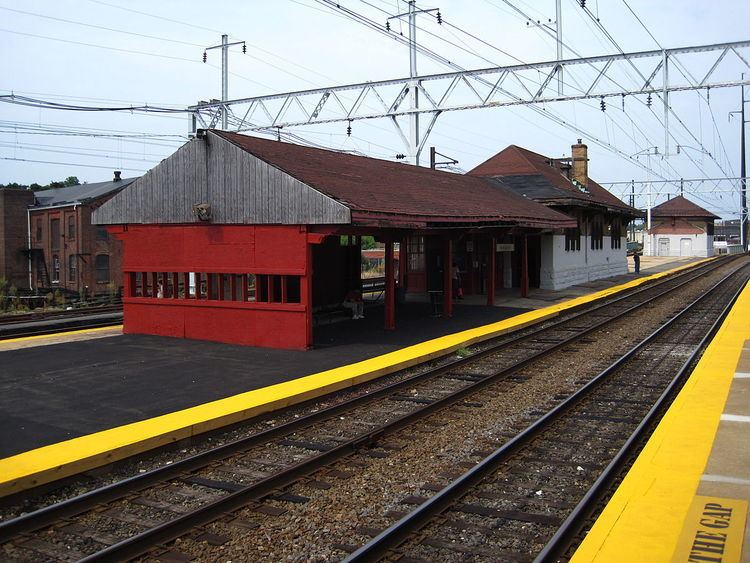Owned by SEPTA Fare zone 1 Opened 1881 Rebuilt 1900 | Tracks 6 Electrified 1931 Owner SEPTA Platforms in use 2 | |
 | ||
Location 4481 Wayne Avenue near Windrim AvenueNicetown, Philadelphia, Pennsylvania Connections SEPTA City Bus 2, 23, 53, 75 Address Philadelphia, PA 19144, United States Line(s) Connection SEPTA City Transit Division surface routes Similar Fern Rock Transportation Center, Temple University station, Jenkintown–Wyncote station, Fox Chase station, Arrott Transportation Center | ||
Wayne Junction station is a SEPTA Regional Rail station located at 4481 Wayne Avenue, extending along Windrim Avenue to Germantown Avenue. The station is located in the Nicetown neighborhood of Philadelphia.
Contents
Wayne junction station new 1
Station
The original station building was designed by architect Frank Furness and constructed in 1881. The current station building was designed in 1900 by architects Wilson Brothers & Company. An old post card once boasted that "more trains stop here than at any other station in the world." The station, located in fare zone one, does have a sales office but lacks any dedicated parking spaces. Wayne Junction is currently undergoing a $11,165,600 renovation that will include a new low level platform, an additional high-level platform in the inbound side, two new elevators, and new canopies and windscreens.
In FY 2013, Wayne Junction station had a weekday average of 527 boardings and 521 alightings.
The SEPTA's Roberts Yard and Midvale District Bus Garage are nearby to this station.
Service
The Chestnut Hill East Line joins the SEPTA Main Line at Wayne Junction. Wayne Junction is the last station before the Fox Chase Line splits off the SEPTA Main Line, at Newtown Junction. Additionally, Wayne Junction is served by the Warminster Line, West Trenton Line, and Lansdale/Doylestown Line on the SEPTA Main Line.
History
For most of the first half of the 20th Century, Wayne Junction served as the Reading Railroad's counterpart to the Pennsylvania Railroad's North Philadelphia Station, 2 miles (3.2 km) away. It served a very busy and prosperous business and residential area, drawing from North Philadelphia, Nicetown, Tioga, Logan, Germantown and other points. In addition to the extensive commuter network, service was provided by the Reading Railroad on a regular basis to New York via the Jersey Central and to Bethlehem and beyond on the Lehigh Valley Railroad to Upstate New York and Toronto. Beginning in the 1890s, Baltimore and Ohio Railroad passenger trains between Washington and New York City, including its famed Royal Blue, also stopped at Wayne Junction, using Reading and Jersey Central rails north of Philadelphia. Until the B&O discontinued passenger service on the line in April, 1958, it provided regular service to Washington with through sleepers to the West, including Chicago, St. Louis, and Los Angeles on such trains as the Capitol Limited and National Limited. The station provided a baggage room and lunch room, as well as the usual telegraph office. On October 25, 1959, Wayne Junction was the starting point for the first of the Reading's Iron Horse Rambles excursions featuring their T-1 class steam locomotives. The surrounding neighborhood was a busy shopping area and provided additional services. The station has been a contributing property in the Colonial Germantown Historic District since 1966, and the Wayne Junction Historic District since 2012.
